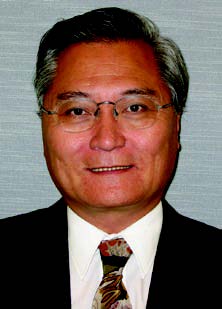
For Chieh-San Cheng, MS ’91, everything he ponders is made up of parts—parts, or data, that ultimately create a whole picture or system.
Cheng is the co-founder and president of Global Science & Technology (GST), a company devoted to solving the technical and scientific challenges fundamental to technology- based enterprises. These enterprises range from creating meteorological imaging systems for global climate forecasting to a portable system designed for soldiers in wartime to receive—in real time—information via satellite. Working with the Goddard Space Center, GST’s scientists have even been involved in testing the Hubble Space Telescope’s wide-field cameras. The company currently has 200 employees, working at six different locations around the country.
“Why look at only one section of the body when seeing the whole physical system in a more holistic way could answer so many more questions?”Chieh-San Cheng
Although Cheng created his company, in partnership with two colleagues who were also NASA contractors, with a foundation in meteorology and systems engineering, he insists he has never been an expert in any one specialty. “Neither am I a born leader,” says Cheng, who also earned a master’s in meteorology in 1975 from the University of Maryland. “But I do like people and I wanted to create a company that would not only provide a unique, healthy, and socially aware culture to its employees, but one that would also provide answers and options to the fields of science, engineering, information technology (IT), and technical support.”
In a relatively short time, GST has done just that, serving clients that range from NASA, the FBI, and NOAA (National Oceanic and Atmospheric Administration) to private global and IT companies. GST even uses RenderMan, the same data processing system that, for instance, Pixar used to create the throng of feisty four-wheeled friends in its recent movie Cars. “Pixar uses the program to entertain,” says Cheng. “We use it to tell stories about the Earth—like those of global warming and ocean patterns.”
Cheng started GST in 1991, just as he completed his master’s through the Whiting School’s Engineering and Applied Science Programs for Professionals (EPP), a degree he had worked toward for four and a half years while he was a NASA contractor.
“The curriculum in that program gave me the confidence I needed… and the big picture in technical management,” he says. “I knew as a child that I wanted to create my own fate, my own vision, and to work for myself. This program provided me with the missing pieces.”
Looking toward GST’s future, Cheng is focusing on medical imaging. “The medical industry has yet to take full advantage of 3-D imaging. Look at Earth and space sciences technology … look at what Pixar is doing in animation; those technologies are so far ahead [of medical technology],” Cheng says.
“We are developing software and programs, using the same technology we have been using to study the ozone hole or forest fire patterns, for example, that could be used to image the whole body at once—and through a low-cost, and lightweight system. Why look at only one section of the body when seeing the whole physical system in a more holistic way could answer so many more questions?”
Though not yet at liberty to reveal much more about his plans for innovating medical imaging, Cheng says he is excited by the potential that biomedical engineering holds to be the “new medicine.”
“The body, after all, is a whole system— like the Earth, like the atmosphere,” Cheng says. “To understand it, you must see it in its entirety—as the sum of its parts.”




